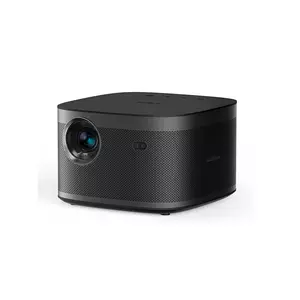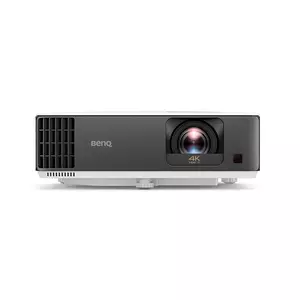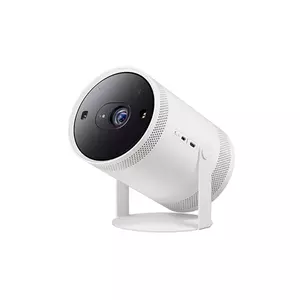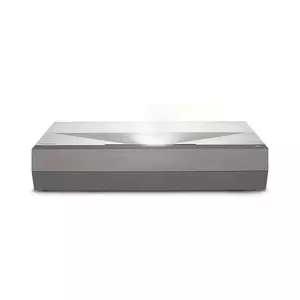What is Color Temperature
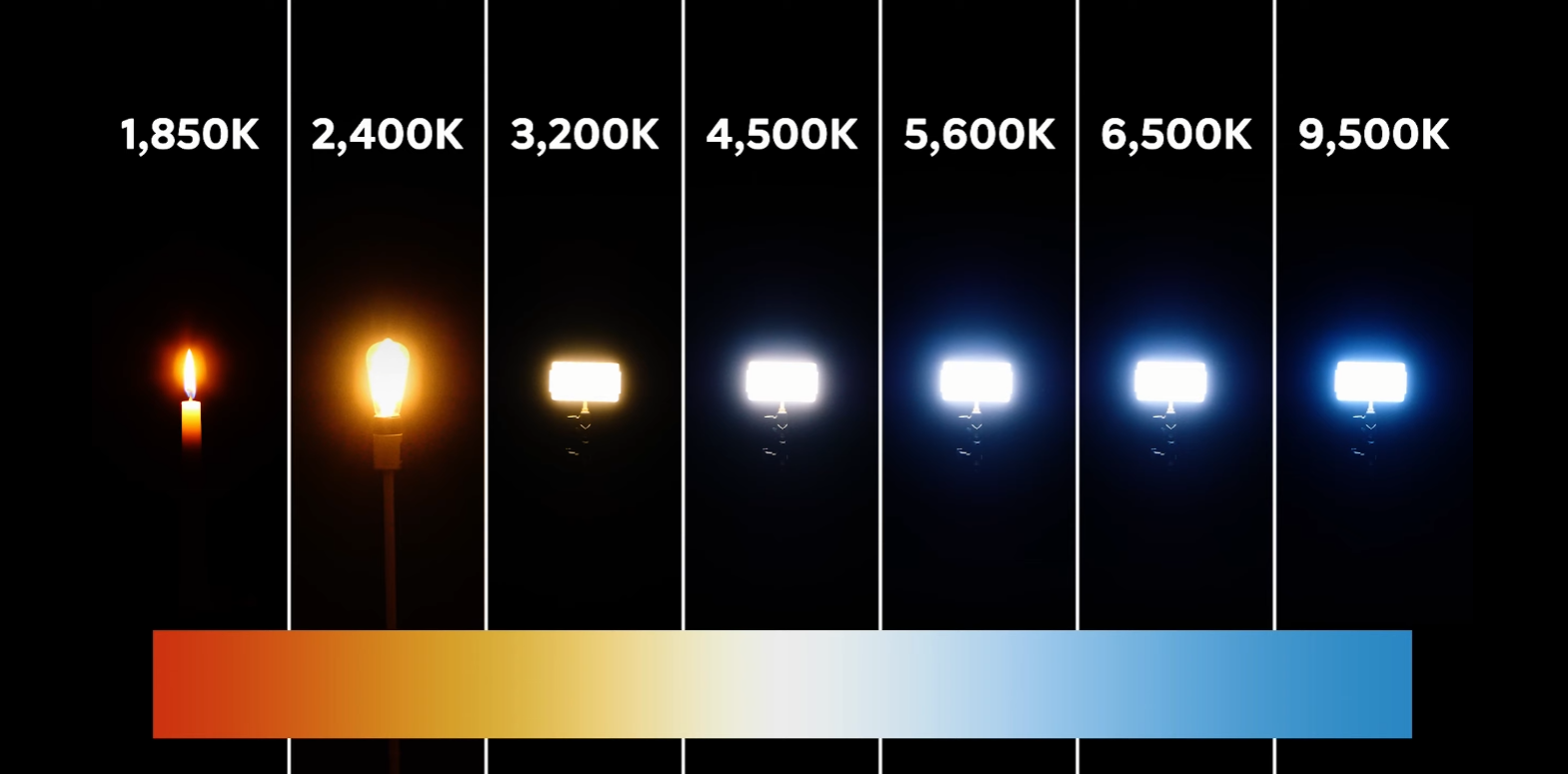
Have you ever found yourself captivated by a movie or presentation projected on a big screen, wondering what makes the colors appear so vivid and lifelike? One crucial aspect that contributes to this immersive visual experience is the projector color temperature. Although often overlooked, color temperature plays a significant role in how we perceive and interpret images and videos projected by projectors. In this blog post, we will delve into the world of projector color temperature, uncovering its importance and exploring how it affects our viewing pleasure.
While most of us are familiar with the concept of color temperature in photography or lighting, its application in projectors might be less familiar. We will demystify this topic by examining the fundamental principles behind color temperature and how it relates to projectors. We'll explore why finding the right color temperature is crucial for achieving accurate and realistic color reproduction, as well as the impact it has on our perception of contrast, detail, and overall visual comfort.
Short answer: Color temperature refers to the hue or "temperature" of light emitted by a light source, measured in Kelvin (K). It determines the perceived warmth or coolness of light, ranging from reddish (warm) to bluish (cool) tones. In the context of projectors, color temperature plays a crucial role in how we perceive and interpret projected images. It affects color accuracy, contrast, and detail, ultimately influencing the overall viewing experience. By understanding color temperature and optimizing its settings, one can achieve realistic color reproduction and create an immersive visual environment for audiences.
- What Exactly is Color Temperature
- How Color Temperature Affects Viewing Experience
- FAQ About Projector Color Temperature
What Exactly is Color Temperature
Color temperature refers to a numerical representation of the color appearance of light. It is measured in units called Kelvin (K) and describes the hue or "temperature" of light emitted by a light source. Although the term "temperature" might seem odd when discussing light, it stems from the correlation between the color of light and the temperature at which an idealized black body radiator emits that color.
At lower color temperatures, the light appears warmer, with a reddish or yellowish hue, similar to the warm glow of a candle flame. On the other hand, higher color temperatures produce cooler light, with a bluish or whitish tone, resembling the color of daylight or an overcast sky.
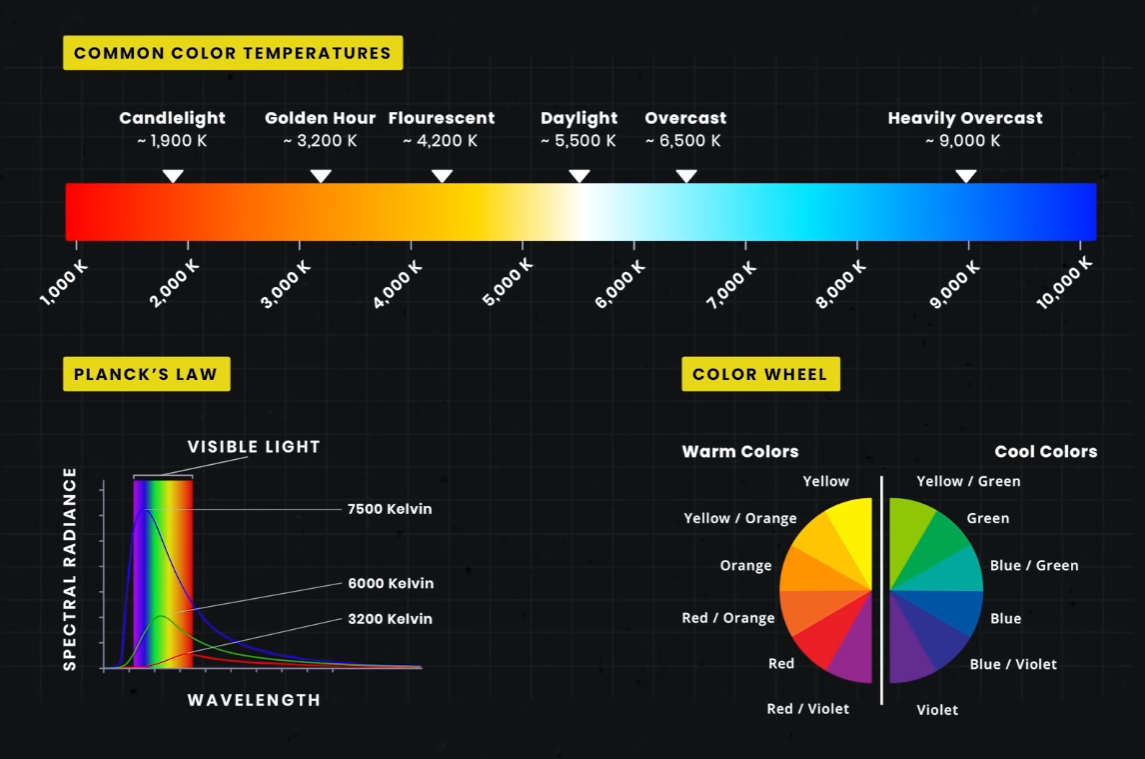
Color temperature chart (Image credit: Studiobinder)
Color temperature has a profound impact on how we perceive colors and the overall mood or ambiance of a visual display. For instance, warm color temperatures are often associated with a cozy and intimate atmosphere, while cooler color temperatures are linked to a more vibrant and energetic ambiance.
Understanding color temperature is essential in various industries, including photography, cinematography, lighting design, and, of course, projector technology. By manipulating color temperature, professionals can achieve accurate color reproduction, create specific moods, and ensure optimal visual comfort for viewers. In the context of projectors, finding the right color temperature is crucial to deliver an immersive and true-to-life visual experience that captivates the audience.
Just to let you know, if you're on the lookout for alluring projector models, here are our top six picks for 2026:
- Excellent 4K image quality
- Stylish and premium design
- Affordable price
- Intelligent screen adaptation technology
- Powerful and high-quality Harman Kardon speakers
- Android TV 10.0 with a rich selection of applications and functions
- Short-throw projection ideal for small spaces
- 4K resolution with low input lag
- Android TV integration
- Compatible with major gaming consoles
- Easy setup with flexible image adjustment features
- 4K UHD resolution with 3,300 lumens
- Long-lasting light source up to 20,000 hours
- HDR compatibility and SuperColor technology
- Flexible connectivity with HDMI, USB, and more
- 3D Blu-ray ready with 360-degree orientation
- Decent 480p image quality with support for HDR10
- Simple and compact design
- Portability and long battery life
- Dolby Digital Plus and Dolby Atmos
- Android 7.1 with sufficient choice of apps and features
- Highly portable with 180-degree rotation
- Auto Leveling, Focus, and Keystone
- Access to a wide range of smart entertainment options
- Dedicated Gaming Hub
- Immersive 360-degree audio with external audio connectivity options
- Ultra-short throw design
- Laser light source for long-lasting and bright performance
- Built-in soundbar with Dolby Digital 2.0
- Smart TV interface with voice control and streaming apps
How Color Temperature Affects Viewing Experience
The color temperature of a projector plays a significant role in how the projected images appear to the viewers. Let's explore the impact of projector image color temperature on the viewing experience:
-
Color Accuracy: The color temperature setting affects how accurately the colors in the projected image match the original content. A properly calibrated color temperature ensures that the colors are reproduced faithfully, making the image appear realistic and true to life.
-
Color Perception: Color temperature influences our perception of images and videos. Different color temperatures can evoke different moods and emotions. For example, warmer color temperatures create a cozy and inviting ambiance, while cooler color temperatures can make the image appear more vibrant and energetic.
-
Contrast and Detail: The color temperature setting affects the contrast and level of detail in the projected image. Optimal color temperature helps enhance contrast, allowing for better differentiation between dark and light areas in the image. This results in sharper details and a more immersive viewing experience.
-
Visual Comfort: Improper color temperature settings can strain the eyes and lead to discomfort during prolonged viewing. Adjusting the color temperature to match the ambient lighting conditions can reduce eye fatigue and provide a more pleasant viewing experience.
Now, let's discuss how you can optimize the projector image color temperature for an enhanced viewing experience:
-
Consider the environment: Take into account the lighting conditions in the room where the projector will be used. Ambient lighting affects the perception of color, so adjust the color temperature accordingly.
-
Use presets or calibration tools: Many projectors offer pre-set color temperature modes, such as "Cinema," "Game," or "Daylight." These presets are designed to optimize color reproduction for specific viewing scenarios. Alternatively, you can use calibration tools or software to fine-tune the color temperature settings.
-
Experiment and adjust: Start with the default or recommended color temperature setting and make slight adjustments based on your personal preference and the content being displayed. You can increase or decrease the color temperature gradually and observe the changes in color accuracy and visual comfort.
-
Take into account the content: Different types of content may benefit from specific color temperature settings. For example, photographs may look more vibrant with cooler color temperatures, while warm color temperatures can enhance the viewing experience for movies or presentations.
By understanding how projector image color temperature influences the viewing experience and following these optimization tips, you can achieve a visually stunning and comfortable projection that truly engages your audience.
FAQ About Projector Color Temperature
What does color temperature actually mean?
Color temperature refers to the numerical representation of the color appearance of light. It indicates the hue or "temperature" of light emitted by a light source, ranging from warm (reddish) to cool (bluish). It is measured in units called Kelvin (K).
How does color temperature impact our perception of light and colors?
Color temperature influences how we perceive colors and the overall mood or ambiance of a visual display. Warm color temperatures create a cozy and intimate atmosphere, while cooler color temperatures produce a more vibrant and energetic ambiance.
How does color temperature affect the viewing experience with projectors?
The color temperature of a projector image plays a crucial role in the viewing experience. It affects color accuracy, contrast, and detail, as well as the overall visual comfort. Proper calibration of the color temperature ensures accurate color reproduction, sharp details, and a pleasant viewing experience.
Are there specific color temperature settings for different types of content?
While there are no strict rules, different types of content may benefit from specific color temperature settings. For example, cooler color temperatures can enhance the vibrancy of photographs, while warmer color temperatures may be more suitable for movies or presentations.
Can I adjust the color temperature of my projector?
Yes, most projectors allow you to adjust the color temperature settings. You can typically find color temperature options in the projector's settings menu. It is recommended to refer to the projector's user manual or consult the manufacturer's guidelines for specific instructions on adjusting color temperature.
How can I optimize the color temperature for my projector?
To optimize the color temperature for your projector, consider the lighting conditions in the room, use presets or calibration tools provided by the projector, experiment with slight adjustments, and take into account the type of content being displayed. These steps will help you achieve the desired color accuracy and visual comfort.
Does ambient lighting affect color temperature perception?
Yes, ambient lighting has a significant impact on color temperature perception. The surrounding lighting conditions can influence how colors are perceived. It is important to take into account the ambient lighting when adjusting the color temperature of a projector for optimal viewing experience.
Can improper color temperature settings cause eye strain?
Yes, improper color temperature settings can lead to eye strain and discomfort during prolonged viewing. Adjusting the color temperature to match the ambient lighting conditions can reduce eye fatigue and provide a more comfortable viewing experience.
